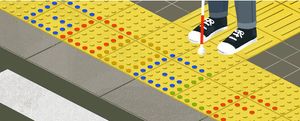MAR 21, 2019
By Anni Griswold
Cataract/Anterior Segment, Comprehensive Ophthalmology, Refractive Mgmt/Intervention, Retina/Vitreous
A weekly roundup of ophthalmic news from around the web.
Cataract surgery restores brightness and hope to millions of Americans each year, but millions more may not be able to access the procedure. A New York Times writer says she was lucky to undergo the procedure, performed by her childhood friend, Charles Zacks, MD. In this opinion piece, she details how the procedure restored her sight and her sense of well-being. NYT
Not even paralysis can hold back this Tokyo DJ, thanks to high-tech glasses that use his eye movements to direct music mixing software. Masatane Muto—aka EYE VDJ—launched his career as a disc and video jockey at age 27, after being diagnosed with the fatal neurodegenerative disease ALS. Five years later, he’s wheelchair bound and has hand paralysis, but his shows still go on thanks to the JINS MEME glasses, which detect eye movement and control an app linked to music-mixing software. “Through my performance, I hope to show that everybody should be given the chance to express themselves," Muto told Reuters Television. CBC News
Acucela is building a compact OCT device that can monitor deep space astronauts for neuro-ocular syndrome. “The commercially available off-the-shelf OCT devices currently deployed to the International Space Station are not suitable for Lunar, Martian and other expeditionary space travel,” the company reported. The new device will be everything these commercial ones are not: smaller, lighter, easier to use, more durable and radiation hardened. Acucela
Microsoft and Oxford BioMedica are joining forces to manufacture better gene therapies using AI technology. The U.K.-based gene therapy firm is developing treatments for AMD, cancer and other conditions. They plan to use Microsoft’s Azure cloud and machine learning software to increase the productivity and purity of viral vectors, while cutting cost. Bloomberg
 Did you see Monday’s animated Google Doodle? The site celebrated Japanese inventor Seiichi Miyake, who designed tactile blocks with dots and bars—like the bumpy yellow tiles on railway platforms and crosswalks—to alert visually impaired people to dangerous environments. Miyake’s desire to help a close friend turned into an innovation that drastically improved how visually impaired people navigate public spaces around the globe. Google
Did you see Monday’s animated Google Doodle? The site celebrated Japanese inventor Seiichi Miyake, who designed tactile blocks with dots and bars—like the bumpy yellow tiles on railway platforms and crosswalks—to alert visually impaired people to dangerous environments. Miyake’s desire to help a close friend turned into an innovation that drastically improved how visually impaired people navigate public spaces around the globe. Google